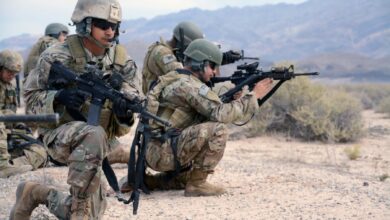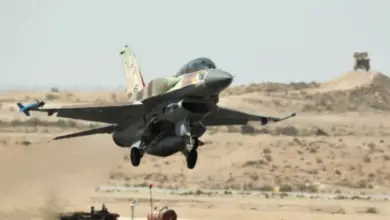US Army Confronts ‘Worrisome Erosion in Overmatch’ With New High-Tech Equipment
The military is ramping up development of next-gen close quarters combat gear to maintain battlefield dominance.
The US Army is looking to reclaim its decisive edge in close combat through modernization efforts including new high-tech gear and a more powerful squad rifle for frontline troops.
In a presentation for the 2020 Virtual Maneuver Warfighter Conference, several army officers outlined recent technological innovations designed to give close-combat soldiers a winning advantage.
The conference was held online on September 9 and 10 by Fort Benning’s U.S. Army Maneuver Center of Excellence and published on the Fort Benning YouTube channel and featured in-depth, graphic presentations of the latest in battlefield hardware.
Among the new high-tech gear are binoculars that see in the dark, innovative “smart” goggles, as well as a more deadly rifle, Army Chief of Infantry Brig. Gen. David Hodne explained.
Also head of the Army’s Soldier Lethality Cross-Functional Team, Hodne stated that these items are under development in response to adversaries having caught up to, or in cases surpassed, America’s close combat capabilities. “In some cases, our adversaries can detect before they’re detected, and that means they can target, and engage before we do,” he explained.
Items under development include the Integrated Visual Augmentation System (IVAS), Next Generation Squad Weapons (NGSW), and the Enhanced Night Vision Goggle-Binocular (ENVG-B) to address the army’s insufficient capabilities in urban and subterranean battle environments.
Integrated Visual Augmentation System
The first piece of new tech showcased in the video is the IVAS, a digital goggle that is head-mounted and connected to the soldier’s radio and a small computer. The goggle allows the soldier to see during the day and in the dark.

The IVAS is a leap forward in night vision digital technology, allowing troops to see where the enemy is as well as where others in a soldier’s unit are. It also assists in target acquisition, provides enemy combatant identification with facial recognition software, translates a variety of languages into English, and allows the sharing of map coordinates and images so others in a unit can see what the soldier sees, Lt. Col. Brad Winn explained.
Next Generation Squad Weapons
Set to replace the M249 and M4A1, which fire 5.56 mm rounds, the NGSW under development with industry partners shoots 6.8 mm rounds, providing enhanced firepower to frontline warfighters.
During his presentation in the video, Maj. Wyatt Ottmar explained, “Near-peer adversaries continue to acquire and develop capabilities that counter army squad weapons and ammunition, reducing, and in some cases negating, our combat overmatch.”
The more powerful, versatile NGSW is a next-gen warfare weapon slated to hit the field in late 2022.
Enhanced Night Vision Goggle-Binocular
The third project discussed was the ENVG-B, a superior binocular system which allows soldiers greater visual clarity compared to previous night vision technologies. The system provides unmatched vision during the day, at night, in inclement weather, and in smoky conditions.

Maj. James Siebert stated that the new goggle allows greater depth perception and includes icons to identify mapped areas and targets on the battlefield.
One of several “Warrior Corner” videos made available by the Maneuver Center of Excellence (MCoE) on YouTube, the army’s presentation at the September virtual conference highlights a recent trend in accelerated development of next-generation technologies to combat the rising capabilities of global military competitors in a variety of military environments.












